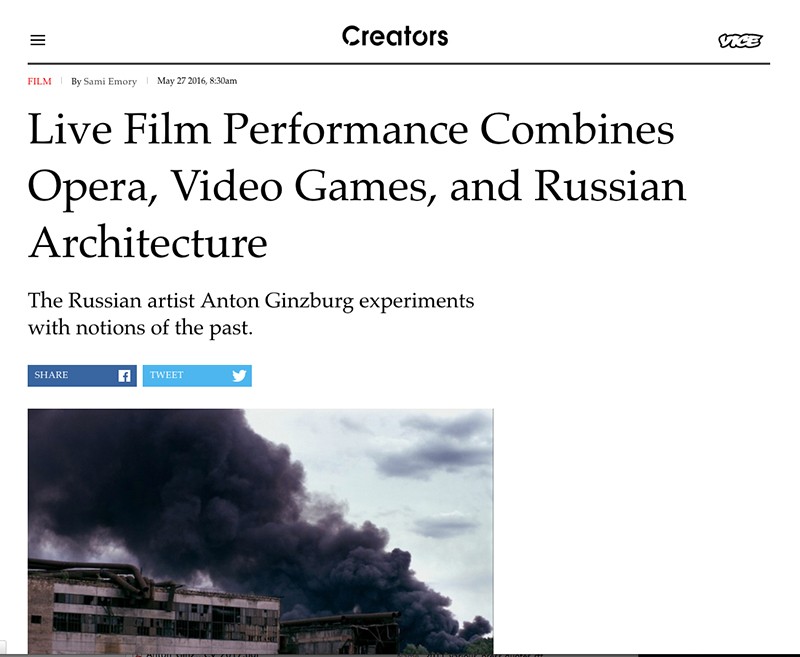Live Film Performance Combines Opera, Video Games, and Russian Architecture
by Sami Emory
http://thecreatorsproject.vice.com/blog/this-film-deconstructs-modernity-with-opera-videogames-and-russian-architecture
Anton Ginzburg constructs architecture into an allegory for modern thought in his newest performance piece, Turo. The piece premiered last week at the second annual SOLUNA International Music & Arts Festival in Dallas and is the third in Ginzburg’s trilogy of works on post-Soviet geography. Scored by the Dallas Symphony Orchestra’s live performances of Pohjola’s Daughter by Jean Sibelius and Waldweben (Forest Murmurs) by Richard Wagner, Ginzburg’s film exposes 20th Century mythologies and phenomenologies through the literal landmarks of Soviet modernism.
“I remember growing up with these buildings in the Soviet Union, they looked like abandoned ships of the avant-garde project,” Ginzburg tells The Creators Project. “Constructivist architecture was an opportunity for me to explore visions of the future for the 20th century.” The 35-minutes of Turo is broken up into an introduction-index and four chapters, two of which premiered at the festival and each of which explores a different Constructivist building: the Melnikov House designed by Konstantin Melnikov, the Narkomfin Building designed by Moisei Ginzburg, the ZIL automobile factory designed by the Vesnin brothers, and finally the ruins of Pripyat and the unrealized Tatlin’s Tower, as seen through a recording of a video game.
“The task [of these buildings] was to represent movement towards the communist ‘paradise on Earth’ that is supposed to be achieved through the combination of revolutionary struggle and creative work as a realization of harmony between man and nature,” the artist says. “[They were] an attempt to create a universal system of social organization, architectural environments and language.”
In communicating this task, Turo heightens these buildings to the status of protagonists—they drive the action. And, like protagonists these buildings too are malleable, impressionable, subject to change. “Each part of the film is a metaphorical tower that gets deconstructed throughout the duration of the chapter,” Ginzburg explains. “Some parts are direct cinematic narratives, like an enormous blaze, while others show deconstruction of an image and shaping its potential meanings on the basis of technological reproduction.”
In its affect, Turo pays homage to the “fictionalized non-fiction” of the Russian documentary filmmaker Dziga Vertov and emulates the theory of Russian theorist Viktor Shklovsky that art should defamiliarize. By drawing from diverse themes and methods, including Norse mythologies, videogame environments, and opera, Ginzburg’s film also achieves a plurality fitting to the utopian aspirations, and dystopian failures, of the the modern architecture it explores.
“Modernity can be interpreted as an updated Babel Tower project where the universal tongue would have been imposed over the rest of the world,” says Ginzburg. “It still resonates deeply with contemporary culture, but today it exists as an archive of ruins, the record of fragmentation.”


